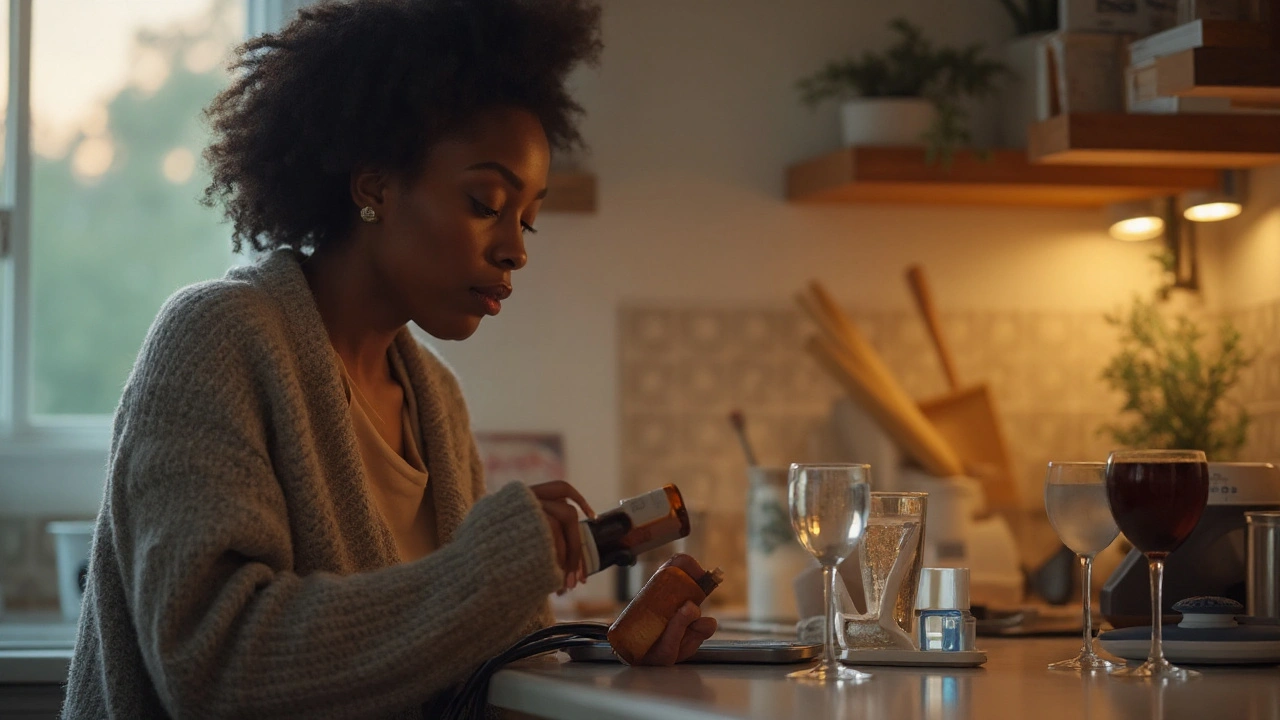Blood Pressure Medicine & Alcohol: What You Need to Know
If you take pills for high blood pressure, you’ve probably wondered whether a drink or two is okay. The short answer: it depends on the drug, how much you drink, and your overall health. Mixing alcohol with blood pressure meds can change how the medicine works, make side effects worse, or even cause new problems. Below we break down the most common drug groups, what alcohol does to them, and easy steps you can take to stay safe.
How Alcohol Affects Common Blood Pressure Drugs
ACE inhibitors (e.g., lisinopril, enalapril) lower your blood pressure by relaxing blood vessels. A few drinks won’t usually stop the drug from working, but alcohol can cause your kidneys to lose more fluid. That may lead to a sudden drop in blood pressure, dizziness, or fainting, especially if you stand up quickly.
Beta‑blockers (e.g., atenolol, metoprolol) slow your heart rate. Alcohol also slows the heart, so the combo can make you feel extra tired, dizzy, or light‑headed. Some people notice their heart beats irregularly when they mix the two.
Calcium channel blockers (e.g., amlodipine, diltiazem) relax the muscles around blood vessels. Alcohol can add to that effect, causing a bigger drop in blood pressure after you finish a drink. You might notice warm, flushed skin or a sudden wave of fatigue.
Diuretics (e.g., hydrochlorothiazide, furosemide) make you pee more to get rid of excess fluid. Alcohol is also a diuretic, so together they can dehydrate you fast. Dehydration makes the diuretic work harder, which can spike your blood pressure again once the fluid loss settles.
Angiotensin II receptor blockers (ARBs, e.g., losartan, valsartan) act like ACE inhibitors. The same warnings apply: watch for sudden dizziness when you stand up after drinking.
In short, alcohol can amplify the blood‑pressure‑lowering effect of most drugs, leading to dizziness, fainting, or a rapid heartbeat. It can also make side effects like flushing, nausea, or headaches worse.
Practical Tips to Stay Safe
1. Know your limits. One standard drink (about 12 oz beer, 5 oz wine, or 1.5 oz spirits) is usually safe for most people on blood pressure meds, but only if you feel fine after it. If you notice any light‑headedness, stop drinking.
2. Take meds with food. Having your pill with a meal can slow absorption and lessen the sudden drop in blood pressure that alcohol sometimes triggers.
3. Stay hydrated. Drink water between alcoholic drinks. This helps keep your kidneys from getting too busy and reduces the risk of a blood pressure swing.
4. Check the label. Some combination pills already contain a small amount of alcohol (rare, but it happens). Read the patient information sheet or ask your pharmacist.
5. Plan ahead. If you know you’ll be at a party, talk to your doctor beforehand. They might suggest a lower dose for that day or a different medication that’s less likely to interact.
6. Listen to your body. If you feel dizzy, nauseous, or unusually tired after a drink, skip the rest of the alcohol and give yourself time to recover. A quick snack and a glass of water often help.
7. Never mix with other depressants. Combining alcohol with strong painkillers, sleep aids, or certain antidepressants can make the blood‑pressure drop even steeper.
Remember, the safest route is to keep alcohol to a minimum or avoid it altogether if you’re starting a new blood pressure medication. Your doctor can give the best advice based on the specific drug you’re on and your overall health.
Bottom line: occasional, moderate drinking isn’t a deal‑breaker for most blood pressure medicines, but it does require a bit of caution. Stick to one drink, stay hydrated, and watch how you feel. If anything feels off, reach out to your healthcare provider – they’re there to help you manage both your blood pressure and your lifestyle safely.

Amlodipine and Alcohol: Safe Drinking Guide, Risks, and UK Tips
Aug, 24 2025Can you drink on amlodipine? Learn how alcohol affects blood pressure meds, what’s safe, UK unit tips, red flags, and real-life scenarios to avoid dizziness and risks.
READ MORE